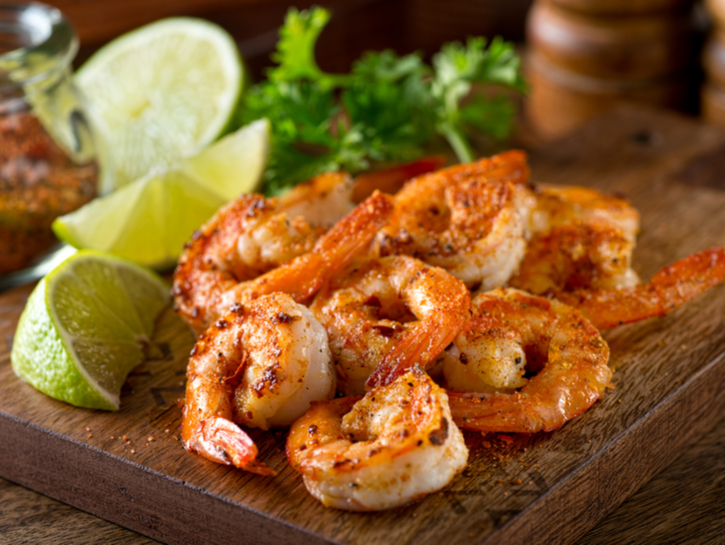Shrimp is a versatile food that can be added to numerous dishes, from southern cooking to Italian dishes to Spanish cuisine. They can be served as appetizers or part of a hearty main dish. But with so many ways to cook shrimp, what is the best method for each recipe? And how can you cook the seafood perfectly to achieve the best flavor?
How To Cook Shrimp
Baking
Baked shrimp has a slightly longer cooking time than other methods of shrimp preparation, but it is still a relatively quick and painless process. Some recipes that call for baked shrimp include stuffed shrimp or just simple roasted shrimp served on its own, like this garlic parmesan shrimp recipe. Many recipes that call for roasted shrimp outline their own specific guidelines, but the basic method is:
- Preheat the oven to 400 degrees
- Toss the peeled shrimp with olive oil and season with your choice of spices
- Spread the shrimp on a baking sheet
- Cook for 6 to 8 minutes

Alice Day/Shutterstock
Boiling
This is a basic method of cooking shrimp commonly used when preparing the popular appetizer shrimp cocktail or when making simple peel-and-eat boiled shrimp, a popular southern food. Take care to not remove the shrimp’s thin translucent shell before boiling — if serving shrimp cocktail, peel after the boiling is complete and before refrigeration. If making peel-and-eat shrimp as part of your meal, then leave the shell on during refrigeration and peel and remove the tail as you eat.
All you need to do for boiling shrimp is:
- Bring a large pot of water to a boil
- Submerge the shrimp so there is 1-2 inches of water covering the top
- Cook, uncovered, stirring constantly until a few of the shrimp begin to float and they become pink and opaque
- Drain the shrimp and quickly put them in an ice bath to stop the cooking process
- Drain and let the shrimp chill on ice in the fridge for an hour before serving

Olyina/Shutterstock
Frying
Frying shrimp is a crispy, flaky rendition of the seafood that is perfect for an appetizer or side. Make sure to use an oil that works well for deep frying, and devein and peel the shrimp before cooking, but leave the tails intact. The process for frying is simple:
- Heat the oil to 350 degrees
- In a bowl, beat 3 eggs well until frothy
- In another bowl, combine 1/3 cup all-purpose flour, 1/2 teaspoon pepper and 3/4 teaspoon salt
- Dip the shrimp in the flour mixture, then submerge into the eggs, then press into 1.5 cups of Panko bread crumbs
- Drop the shrimp into the oil for 30-60 seconds or until golden brown
- Spoon out and drain onto a paper towel

Brent Hofacker/Shutterstock
Grilling
During the hot summer months, there is no better food than skewers. And no kabob would be complete without grilled shrimp. As with boiling, be sure to leave the shell on the shrimp when cooking because it will keep the meat tender and protected over the high heat. If you’re making kebabs, add them to a skewer grilling, or skewer them alongside vegetables before serving. Here’s what you do to grill shrimp:
- Butterfly (or devein) the shrimp by cutting them lengthwise down the back so they splay out
- Brush the shrimp, the shell still on, with olive oil
- Season with your choice of spices
- Grill for about 2 minutes on each side until the shells are hot, pink and opaque

Ramona Heim/Shutterstock
Sautéing
Cooking shrimp on the stove is a quick method you can use with many shrimp-based recipes. You can also serve sautéed shrimp on its own as a side. This method is popular for dishes such as shrimp scampi, shrimp paella or even just serving the sautéed shrimp on its own with spices. Make sure to remove the shrimp’s shells before placing them in the pan, though the tails can remain on if desired.
To sauté your own shrimp, just:
- Peel the shrimp
- Warm olive oil or butter on a skillet over medium-high heat
- Place the shrimp on the skillet and sprinkle generously with your choice of seasonings
- Sauté the shrimp until the flesh is pink and opaque. This should only take a few minutes.

Dallas Events Inc/Shutterstock
